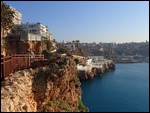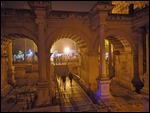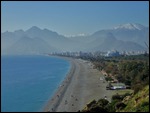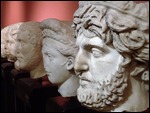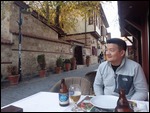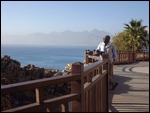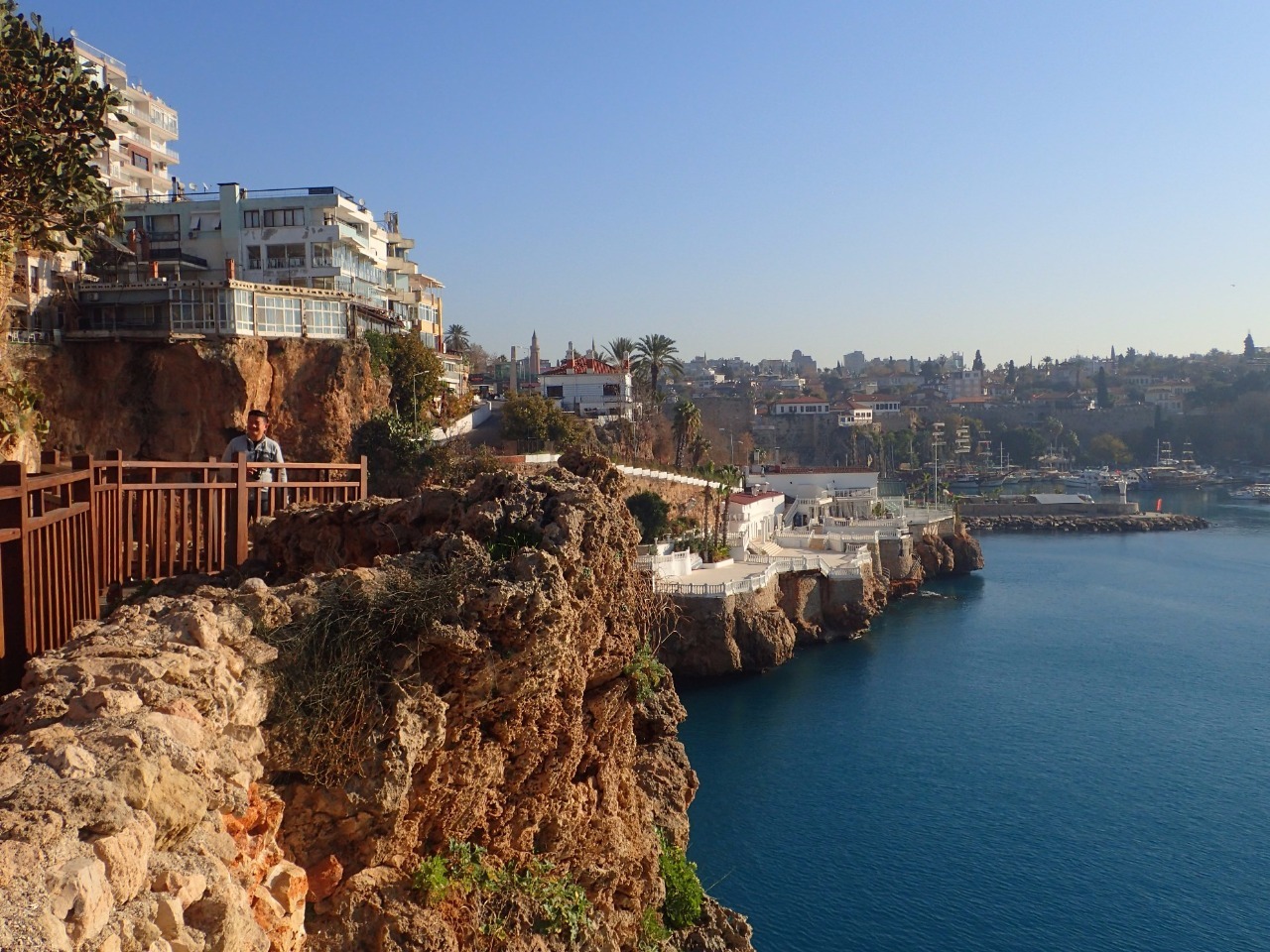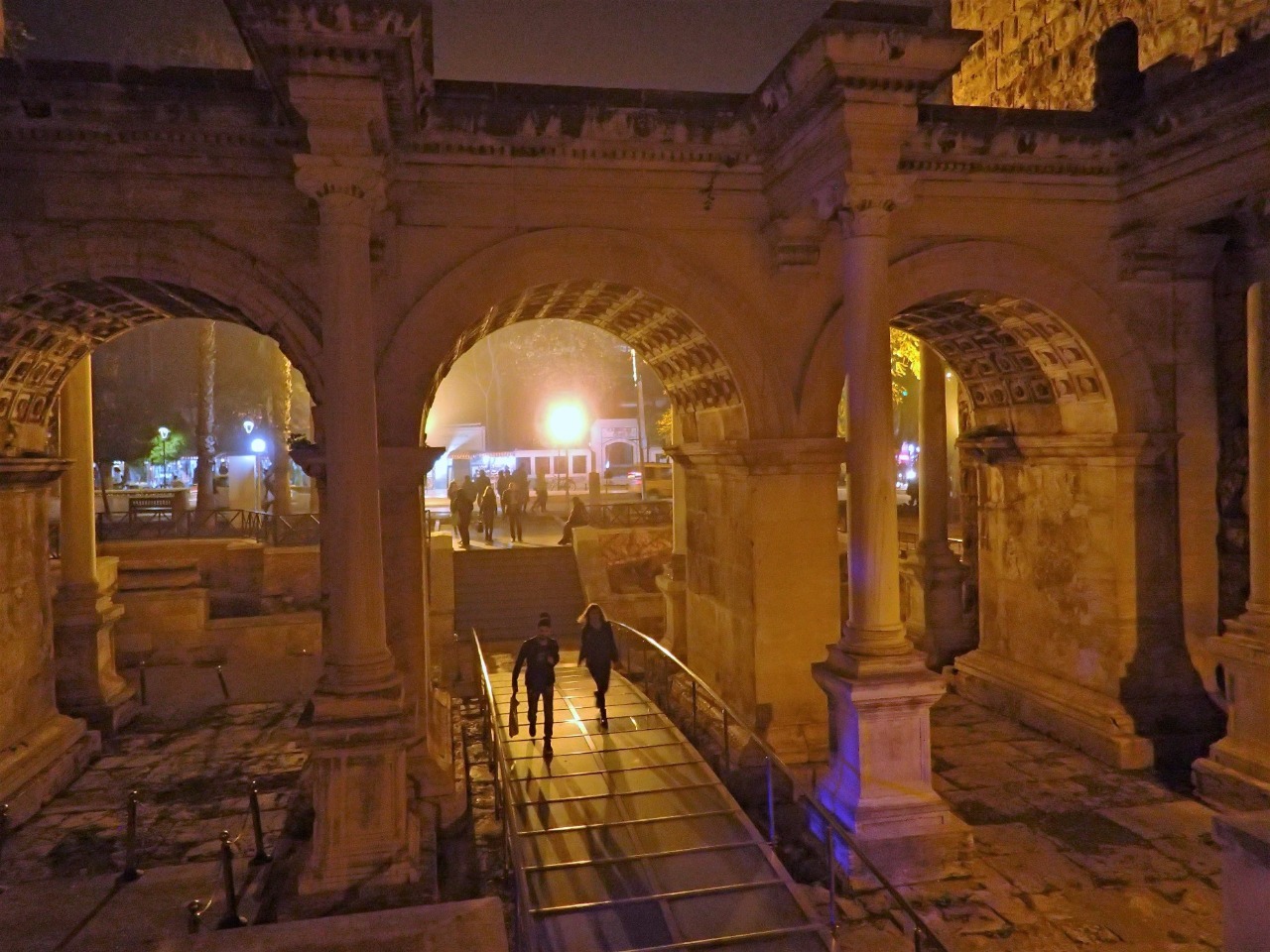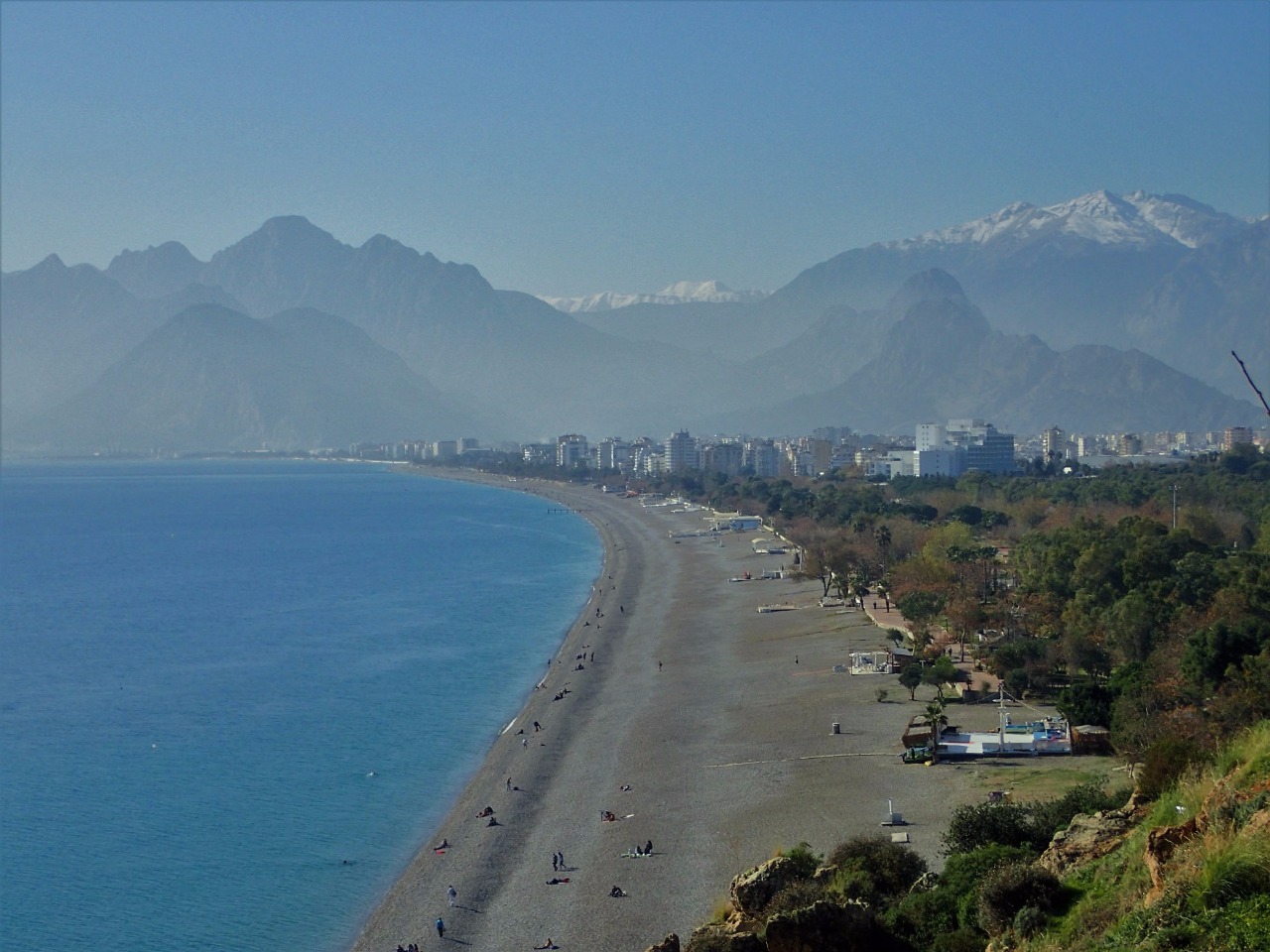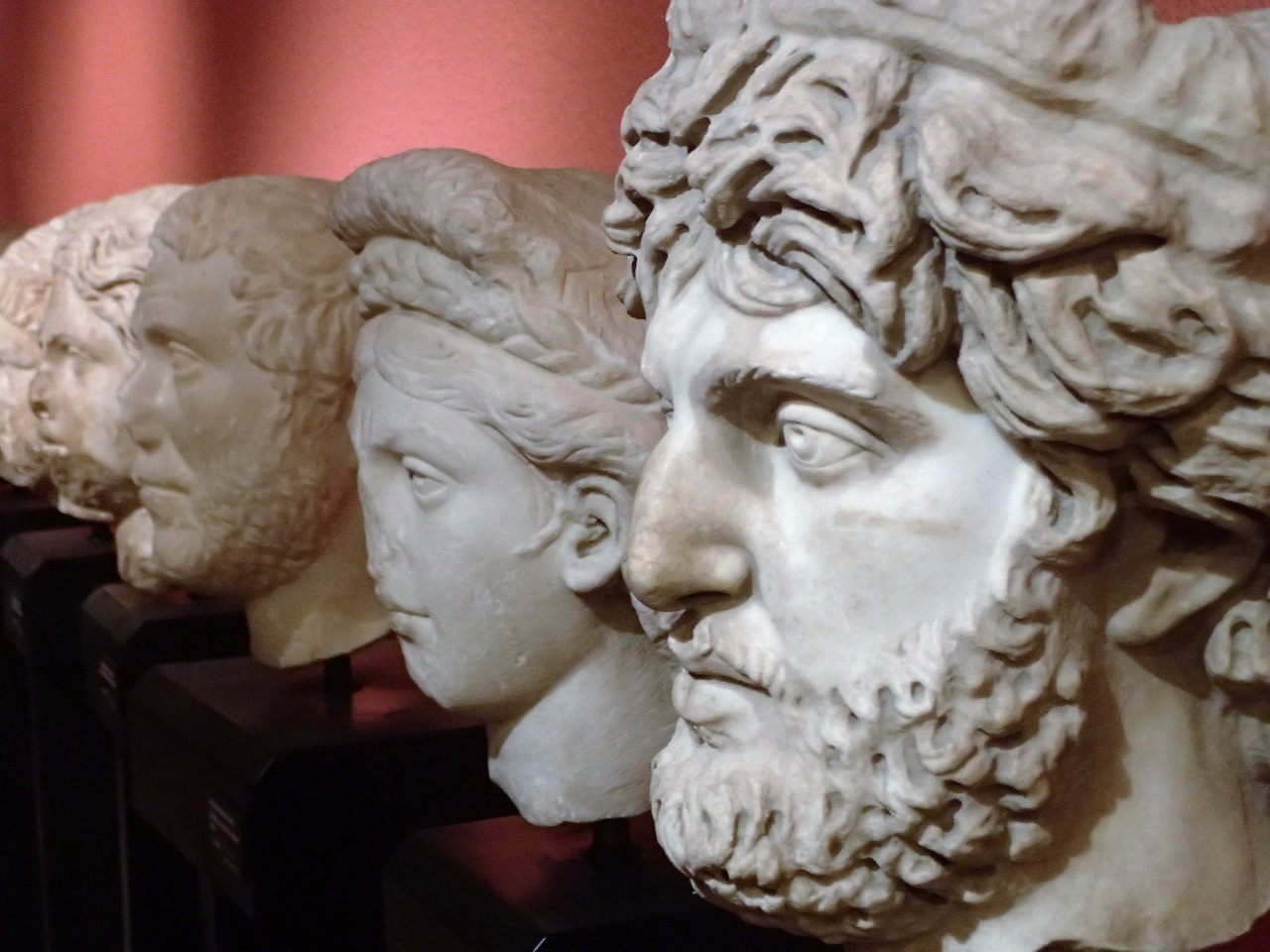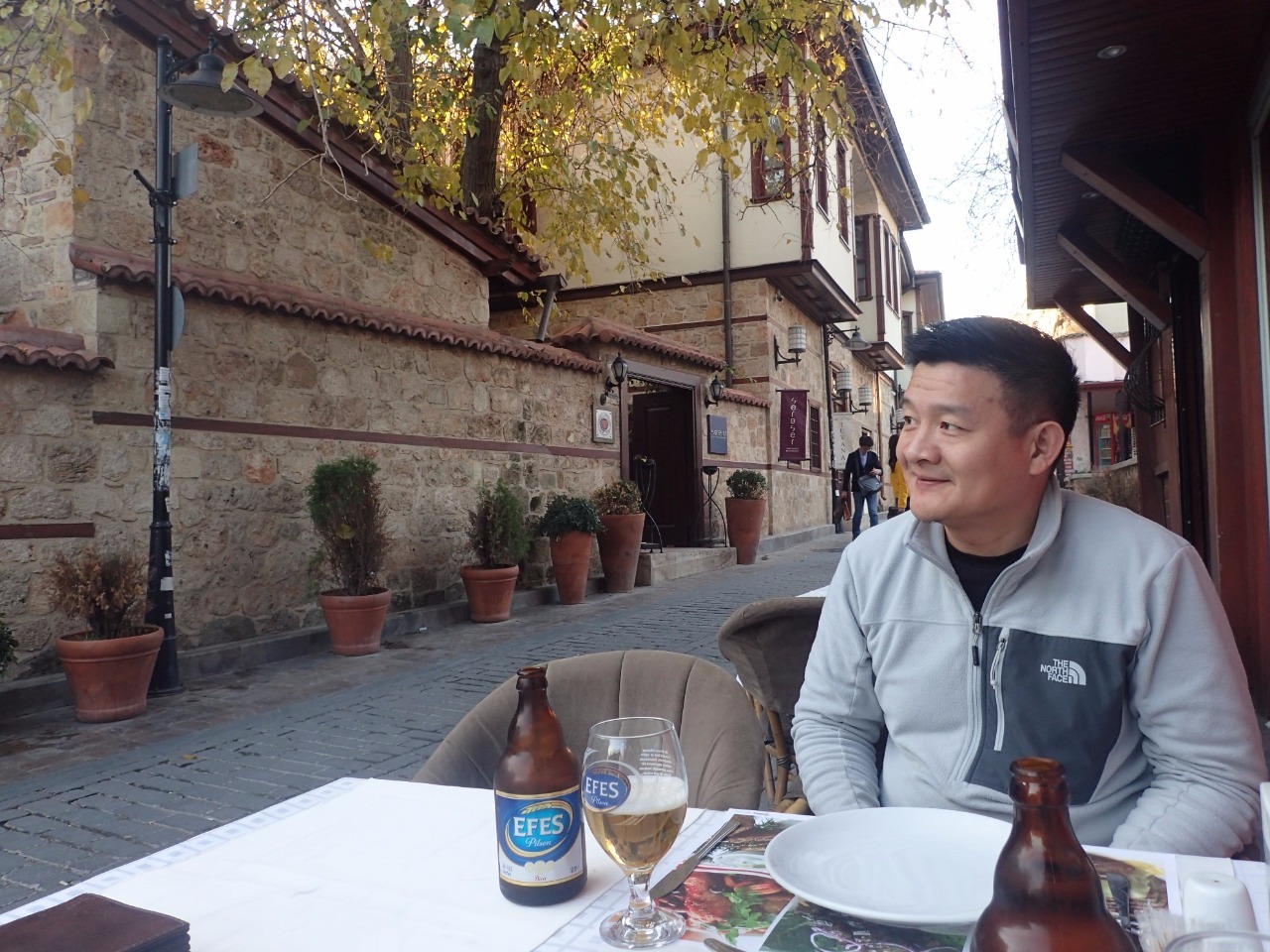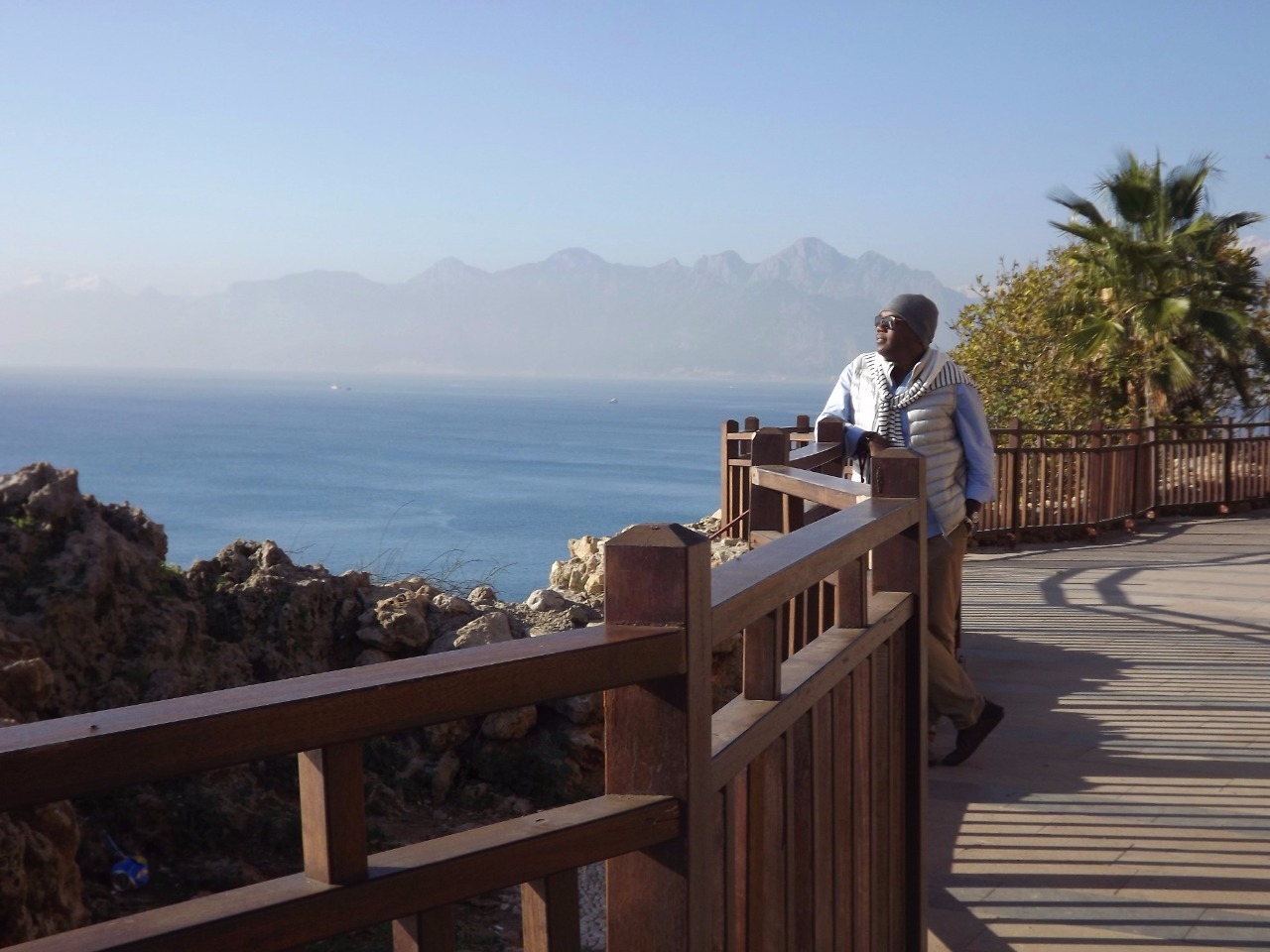To see the rest of our photos, visit my Flickr album here.
Neil and I flew to Antalya from Istanbul as part of our two-week winter vacation in Turkey. Since it is the middle of winter, we went for the warmest place - Antalya, a Turkish city on the Mediterranean coast and a popular beach destination for European and Russian tourists. We were surprised to find extraordinary antiquities, balmy climate, stunning coastlines, efficient infrastructure, and a friendly, relaxed people.
Antalya is located in Anatolia, or Asia Minor - the peninsula that protrudes from Asian Mainland into the Mediterranean Sea. The Romans called this land Asia, yet the Arabs called this land Rum ("Rome"). Forming the central part of Turkey, it is a strategic land fought over by many nations throughout history. Before the 11th century victory of Seljuk Turks over the Byzantines, Antalya was a Greek city under Roman/Byzantine rule. Afterwards the Seljuk Turks set up an empire of Rum with its capital in Konya, not far from Antalya. Seljuk Turks were vanquished by the Mongols in the 13th century, and Antalya was absorbed into the Ottoman Empire in the 14th.
We flew from Istanbul's new Sabiha Gukcen Airport to Antalya, via Pegasus Airlines. On our way to Sabiha Gukcen airport in Istanbul's Asian suburbs, several new high rise buildings caught our eyes with unique decorative designs fusing Islamic textural patterns with modern sleekness. Huge new mosques resembling the Blue Mosque seemed to be the prerequisite for each grandiose new township.
A. Roman City of Attaleia (Kaleici district)
Our hotel was a short walk from Hadrian's Gate, a triple-arched marble gateway built during the time of Roman Emperor Hadrian, and still used today for entering the Old City. The ancient marble paving stones beneath the gateway are now protected under glass plates. As we walked into the Old City, adjacent to the Roman Gate was an open-air hookah lounge humming with local pipe smokers. The main street of the Roman city is a narrow pedestrian lane lined with Ottoman houses restored as tourist hotels, often with beautifully landscaped patios containing swimming pools, perfect for dining, lounging, and drinks. We eventually followed the lane to the Roman harbor surrounded by high fortified bluffs. Inside the harbor were fishing boats catering to tourists, and plenty of bars and restaurants. Public parks occupy much of the bluffs above, connected by convenient stairways and landscaped terraces. We were surprised that so many businesses were open, yet so few tourists were around. Later we found out that the winter season in Antalya typically receives many Russian tourists, whose numbers dwindled this year because of tensions over the recent downing of a Russian fighter jet by the Turkish military.
The next morning we walked around to explore the coastline nearby. Much of the coastline near the Old City are dedicated to public parks, often with stair steps down several levels to the sea bluffs. Under the warm sun there were gorgeous views of the shimmering Mediterranean and snow-capped Taurus mountains in the distance. Along the walk many cafe and restaurant terraces occupy precarious vertical perches over the sea. What a beautiful coastline perfect for a glass of wine! Further west is a long beach where many Russian tourists strolled around with children, playing ball on the beach, enjoying the great weather.
We spent five days in Antalya, taking daily excursions to nearby sites, each one splendidly preserved from the classical antiquity. We enjoyed delicious home cooking at a mom-and-pop restaurant in the Old City, and also a fine dining restaurant considered the best international cuisine in Antalya. We lounged away an evening at a bluff top bar whose Greek-looking owner played American pop music. The Old City is dedicated entirely to tourism, filled with souvenir and carpet shops, hotels, restaurants, car rental agencies, and a few Turkish baths. We got our first introduction to Turkish bathing in the old city, featuring vigorous massages and drenching repeatedly with very hot water. The Turkish baths here do not have big pools of hot water like the Roman baths, instead the masseuse manually pours hot water on bathers laying on the massage table, relying on heat of steam collected inside the domed bathing hall. This is a great way to minimize energy and water use.
Outside the Old City walls, the main drag of town was bustling with locals, especially in balmy evenings when the street was full of strolling people: young couples, groups of same gender friends, etc. Most older women wore head scarves while many younger women were uncovered. Beside the rows of kebap restaurants popular with locals, McDonalds was nearby too and they deliver food on motorbikes!
B. Archaeology Museum
The Antalya Archaeology Museum is a superb large museum with extensive collections from antiquity. As we entered the museum, a large group of Turkish school kids also entered around the same time. A few curious school boys among them started asking us in English where we were from, speaking with good American accents. I shook hands with them, and they continued asking more questions until their chaperon called them back. We must be oddities to the locals since we didn't look European like most tourists here.
The most impressive collections in the museum are the large number of marble statues of Greco-Roman gods, emperors, and generals, in great condition. These were unearthed from the dozen ruined Greco-Roman cities around Antalya. In particular, Perge - the main city of Pamphylia province where Apostle Paul preached Christianity - was the source of most of the statuary in the museum. Upstairs there was a collection of Christian icons, including that of Saint Nicholas who was famous for being the origin of Santa Claus. Ongoing archaeological excavations were also featured in the museum, whose principal Turkish archaeologists were highlighted as role models.
We enjoyed a tea break at the museum cafe and wandered the grounds of the museum. We followed a long garden path lined with lion statues on both sides as well as blooming rose bushes. In the large open area there were more marble sarcophagi, more marble relief sculptures from ancient buildings, and carved marble columns. The abundance of classical art objects was astonishing.
